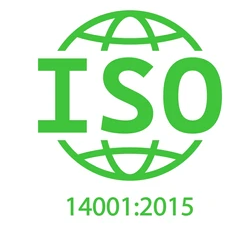FINANCIAL RISK ASSESSMENT & MANAGEMENT
- Description
- Curriculum
- Reviews
Risk is inevitable. Business, organization, and individual can experience an unexpected and perilous event that can cause a serious negative effect, maybe even shut down in case of business, or jeopardized livelihood. In the last couple of years, there have been several indications that many organisations are still a long way from assessing and managing their financial risks effectively. This Financial Risk Assessment and Management course divulges the process of identifying risks, analysing them and making investment decisions based on either accepting, or mitigating them.
Risk assessment and management is fundamental to good corporate governance. With a strategically blend of qualitative and quantitative controls, risk can be effectively and efficiently managed.
Significantly, the course equipped management in analyzing and controlling risks that may affect the achievement of organizational objectives.
COURSE OBJECTIVE
At the end of this course, participants will be able to:
- Develop techniques to identify risks in their area of expertise
- Prepare and develop ability to take ownership and responsibility for the risks
- Promote compliance with the organization’s control systems
- Develop and engender a culture of risk awareness in the organization
- Improve the use of appropriate techniques to support the effective analysis of capital investment projects and financial risk assessment in the organization
COURSE OUTLINE
MODULE1 – UNDERSTANDING FINANCIAL RISK ASSESSMENT AND MANAGEMENT
- Different types of financial risk
- Why manage financial risks?
- A risk management framework
- Creating value with risk management
- Measuring risk for a single asset and for a portfolio of assets
- Operational Risk
MODULE 2 – FINANCIAL ENGINEERING & HEDGING
- Basics of derivatives
- Forwards, pricing of forward contracts under assumptions of dividends, carrying costs, etc
- Futures, settlement mechanism, clearing house concept
- Hedging with futures and forwards
- Basic, and exotic options
- Basics of option valuations, valuation options using Black-Scholes Model
- Duration hedging
MODULE 3 – MEASURING VOLATILITY AND CORRELATIONS
- Conditional volatility
- Unconditional volatility
- Estimating covariance
- Using EVMA and GARCH methods in VaR calculations
MODULE 4 – QUANTIFYING FINANCIAL RISKS
- Value at Risk (VaR) measurement
- Historical and Monte Carlo Simulation approaches
- Regression Analysis
- Back-testing
- Stress-testing
- Capital charge for market risk under Basel rules
- Scenario Analysis
MODULE 5 – TOOLS AND TECHNIQUES TO MITIGATE RISK
- Credit analysis models (expert system, credit scoring and rating models, artificial neural networks
- Capital charge for credit risk under Basel rules
- Calculating default probabilities with actuarial and market prices based methods
- Tools to Manage Financing, Liquidity, and Cash Flow Risks
- Measuring loss given defaults with actuarial methods
- Credit Derivatives
Who Should Attend?
Financial officers, controllers, accountants, Treasurers, corporate planning and business development professionals, Sales and marketing professionals
Delivery Method: This will include combine lectures, discussions, group exercises, case studies and illustrations. Participants will also understand the theoretical and practical knowledge of the topic.
Venue: USA
Fee: $5000
Duration: 1 week
Course Date: June 5th – 9th 2023



